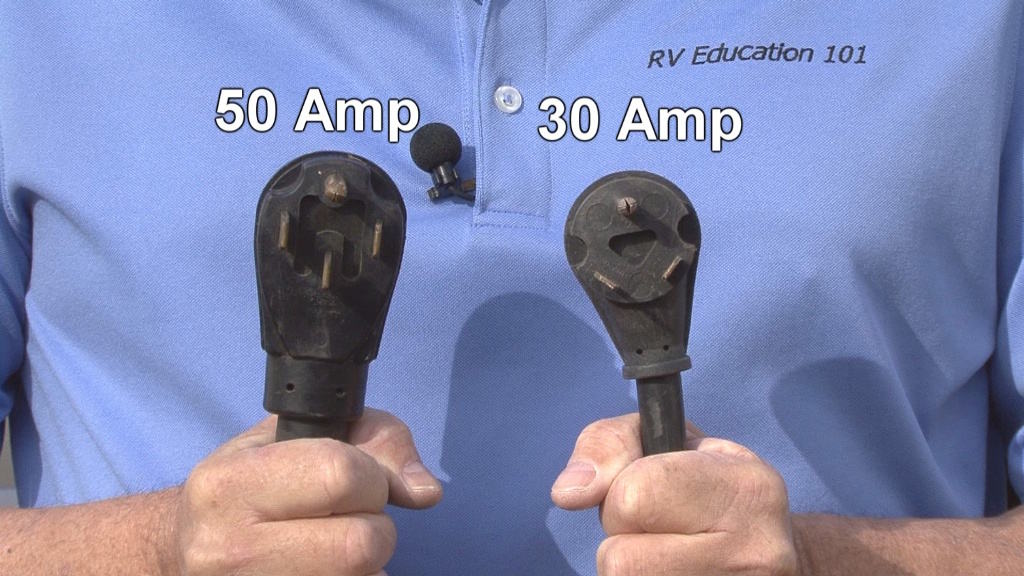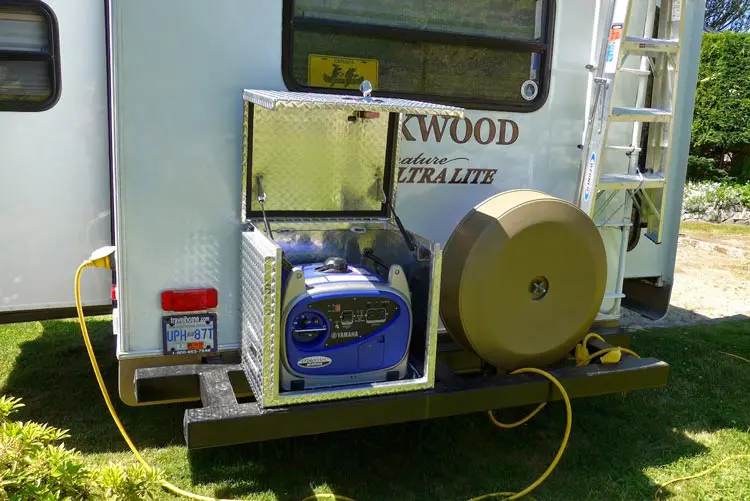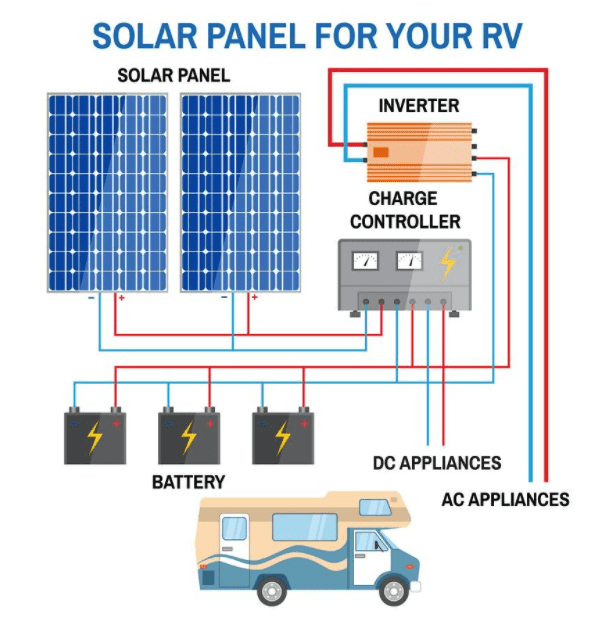Last Updated on September 26, 2023 by
RVs are loaded with essential features and technology, which includes the addition of multimedia, smart systems, touch controls, power system, and a lot more like that. This requires electrical systems to work properly in order to get output from the installed components on the RV.
It is not so simple to understand the electrical wiring structure of an RV because there are a lot of complications in there, and only experts can understand it.
However, what you can do is understand some basic components of your RV and see how AC and DC are flowing through the generators along with all the electronic equipment installed on your computer system.
In case you want to learn about RV Wiring Diagrams and everything else that a common person would, then here we have a guide for you.
Understanding AC and DC Power in RV
RV electronics work on two types of electrical systems that include Alternating Current (AC) and Direct Current (DC). AC controls a normal control phase of current like a home. It is substituting flow in light of the fact that the flow of the power isn’t unidirectional. The electrons quickly move to and fro. Lights that are placed in an RV use AC power.
They look consistent to the natural eye, yet in reality, lights quickly streak like a strobe light. This impact is straightforwardly brought about by AC power adjusting bearings. This conduct causes brief breaks in power, which isn’t an issue for gadgets with basic hardware.
Understanding your camper’s electrical wiring can be exceptionally confounding. You can understand it more easily if you have an RV wiring diagram. It can show you comprehension of what powers what and figure out how an RV electrical framework functions.

Nonetheless, the strobe kind of stream isn’t normally viable with more advanced electrical frameworks. Generally, you can expect that it requires DC in case that it has a computer chip. To make them viable with AC, a significant number of those frameworks, like PCs, come outfitted with locally available AC to DC converters.
This can leave you wondering if DC is more stable than the AC and also much suitable to use for everything, then why shouldn’t we be using it? The appropriate response is that DC is hard to send over significant distances, which is the reason AC controls the public network.
Camping Gear SALE!
We have teamed up with Ape Survival to give you a huge 25% off EVERYTHING on their store! They have camping gear, hiking gear, survival gear and much more, all at 25% off when you click the link below.
SHOP NOWDC for Priorities & AC for Extras
A normal electrical system in an RV is controlled with a 12-Volt DC. RVs have house batteries, so DC is the most available wellspring of power for any RV. The fundamental gadgets pull from those batteries: deep freezer, slides, water siphon, lighting, and so on. Obviously, there are special cases for each standard, yet this is a dependable rule.
Anything connected to an outlet will get the standard 120 Volts of AC that any family outlet would supply. In case that the RV is associated with power or a generator is running, the divider outlets will pull the required AC power from that source. Then, expecting that the RV is furnished with an inverter, 12 Volts of DC will be sucked from the house batteries.
That power will go through the RV’s inverter, and the delivered 120 Volts of AC power will run whatever you associated with the electrical plugs that may include any electronic device like a laptop charger, mobile phone charger, microwave oven, and much more.
Converters and Inverters
A converter is a device that hooks up the DC batteries to the AC power source for easy transmission in order to convert the AC power to DC power. The AC can be communicated; however, it can not be put away in a battery. That is one motivation behind why we need both. A converter is the very kind of gadget that you will find on a computer system.
It is simply utilized on an RV-wide scale instead of a single gadget. Numerous RVs have inverters. They do exactly the same thing as converters, yet it is switched. Inverters convert DC to AC. You can see instances of this by guiding your attention toward the RV electrical chart.
As you most likely are aware, a few gadgets require AC, and some require DC. Given that there is an adequate wellspring of power, converters and inverters give an RV the adaptability to control the entirety of its gadgets, paying little heed to the power source, AC or DC.
Sources of RV Power (AC or DC)
RV power sources are the AC and DC that are taken from Shoreline, solar panels, wind generators, and Generators. Shoreline and generators work with AC, whereas solar panels and wind generators are with DC.
1. Shoreline (AC)
An RV can have 120V of power drawn from an AC source. It is to understand the variation that the alternating current is causing. The stated voltages of shoreline power pedestals can change, and they have changed a lot over the past few years, but you can consider 100, 110, and 120 volts to give the same output as one another. These pedestals can have two configurations.
- 30-Amp Socket: This type of shoreline socket has a three-prong receptacle. You can get about 30amps with 120v of power from one prong of the socket. Calculations can be taken to draw the power for each of the prongs, which can roughly provide a power of 3600w in total.
- 50-Amp Socket: This type of socket has four prongs receptacle that can provide even better power than the three-prong socket. In this type of socket, two prongs supply 120 volts each and deliver a good output of 50 amps. This can roughly give you about 12,000 Watts.
2. Generators (AC)
A generator is a good source of power for any RV. It gives AC power, and it is the best option to consider because it very well helps in all situations by giving out 120 volts of AC power that you get from a shoreline association to light up your whole RV and make use of the power.
3. Sunlight Powered Chargers – Solar Energy (DC)
Solar panels are monetarily insightful and harmless to the ecosystem, and they can help to store power discreetly to give an output of 12 Volts of DC power that can be taken care of straightforwardly into your RV’s batteries.
Camping Gear SALE!
We have teamed up with Ape Survival to give you a huge 25% off EVERYTHING on their store! They have camping gear, hiking gear, survival gear and much more, all at 25% off when you click the link below.
SHOP NOW4. Wind Generators (DC)
Wind generators are an ideal expansion to a boondocking system. They are additionally less expensive than sun-powered chargers, yet they are a bit more testing to carry out. They aren’t just about as well known as sun-powered chargers. In case that a situation is unfolding, those mists will stop the power of your solar chargers from the sun. They just need more attention.
5. Energy Management Systems
[amazon box=B0851KGF57]
You can consider energy management systems as your quick gadgets for a more insightful electrical switch. An energy management system helps to record and screen the power that is given to your gadgets but in limited supply so that nothings gets tripped. This will keep those circuit breakers from stumbling.
They do considerably more than that; however, this fills in as a straightforward use. The power requests of an RV shift from one second to another, and in some cases, those requirements surpass the power accessible from the camping area platform. In such cases, it will trip the electrical switch on the platform. This can be disturbing for you when you have a lot of traveling, and you go out with your friends and family often.
A more costly EMS will gauge how much power the platform is conveying and contrast that with the RV’s electrical interest. In case that the platform doesn’t supply sufficient power, it will empty what it needs out of the battery to compensate for any shortfall.
Conclusion
This was a guide for the RV electrical diagram and its circuits where AC and DC control the power and working frameworks of an RV. We discussed details about all the essential needs of power supply to different electronic components of an RV so that you can understand the basic requirements and working of the power supply in your RV.
FAQ
How are RVs wired?
A huge line connected to an electrical platform conveys AC capacity to the RV wires running all through your motor home. That enormous fitting runs into your RV, where it associates with a 120V breaker board. Wires run from that breaker board to outlets and apparatuses and a converter that changes AC capacity to DC.
What runs on 12V in RV?
The heater in an RV utilizes propane to make heat; however, there is a fan that blows that warmth into the RV. Various sizes of RVs utilize various sizes of heaters that draw various measures of power from the RV battery. The RV heater will run on 12V force, yet not the climate control system.
Would you be able to plug your RV into your home plug?
Yes, you can plug your RV into a family electric framework. Yet, there are constraints, including such RV machines you can run and the measure of time you can run an RV on family electric.
Table of Contents




